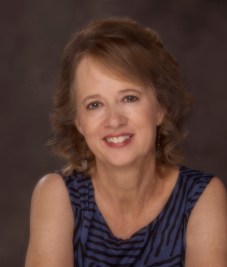Today we’re excited to feature our interview with Cory Putman Oakes, a children’s book author from Austin, Texas. Her middle grade debut, DINOSAUR BOY, hits shelves in February, 2015 with its sequel, DINOSAUR BOY SAVES MARS, to follow in February, 2016. She is also the author of THE VEIL (a young adult novel). Cory is a former lawyer, a former Californian, and a current Mexican food enthusiast. When she’s not writing, Cory enjoys running, cooking, and hanging out with her husband and their two kiddos.
Tell us where you got your inspiration for making your main character a human/dinosaur hybrid.
When my son was just a few months old, he had this little dinosaur hoodie (complete with spikes) that I absolutely loved. I tried to work the idea of a half-dinosaur, half-human baby into another project I was working on, but my agent (Sarah LaPolla) suggested that the dinosaur kid really needed his own story. I’m so grateful to her for that! So really, I have my son and my agent to thank for Dinosaur Boy.
This story idea is quite unique, but are there other books that touch on some of these same topics and themes that have inspired you?
I think Dinosaur Boy can be compared to any book about someone who is different. There are many themes in the book, but to me, the main one is self-acceptance. Accepting your own “weird” is an issue that everyone struggles with – even a lot of adults. So it’s not surprising that there are lots of books on the subject!
Author P.J. Hoover (who was kind enough to blurb Dinosaur Boy) called it “Wonder with dinosaurs.” Wonder has been on my reading list for ages and though I (embarrassingly) haven’t read it yet, I’m told that it’s about a fifth grader with a facial deformity and it’s very touching. I’m thrilled that anyone would compare Dinosaur Boy to a book that was so well received. And as far as I’m concerned, the more books out there encouraging kids to love what’s weird about them, the better! Weird is awesome.
You were born in Switzerland, and raised in America. Did that give you a unique perspective that other classmates might not have had? Does that impact your writing?
I was born in Switzerland, but my parents were American and we moved home to the U.S. shortly afterwards, so I can’t say that it’s impacted me very much. But my parents did take me travelling a lot when I was young, and I think that had a big impact on me. Travelling gives kids a perspective that is hard to get any other way – it teaches you to be flexible, to be tolerant and appreciative of people and things that are different, and it really opens your eyes to how tiny your little corner of the world is.
Before you were a writer, you were a lawyer. Any plans to write legal thrillers or other books that use your legal background?
Ha! No legal thriller plans in my future. After I left law, it actually took me a while to “unlearn” writing like a lawyer and to start writing like a writer again! I used words like “foreseeable” and “negligent,” like, all the time. Even when kids were talking!
I’m much better now, but I still have to be careful! There’s a chapter in Dinosaur Boy where Sawyer and his friends discover a contract (I won’t say about what, because SPOILERS!) When I wrote my first draft, I included the entire contract, complete with terms and conditions, limitations on liability, indemnification provisions, etc. I thought it was hilarious. I read it out loud at a retreat with some author friends and they were all laughing hysterically – but at me, not the writing. They were all like “Oh my god you lawyer! Get rid of that! This is a kid’s book!” And they were absolutely right!
So I still have to watch it. The legal-writing beast is still very much alive inside of me, and constantly at war with the fiction-writing beast!
In honor of Valentine’s Day, what are your favorite songs about love?
My husband and I danced to Elton John’s “Your Song” at our wedding, so for me, it’s pretty hard to beat that one ☺
About Dinosaur Boy:
Everyone knows the dinosaur gene skips a generation. So it isn’t a complete surprise when Sawyer sprouts spikes and a tail before the start of fifth grade. After all, his grandfather was part stegosaurus.
Despite the Principal’s zero tolerance policy, Sawyer becomes a bully magnet, befriended only by Elliot, a.k.a. “Gigantor,” and the weird new girl. When the bullies start disappearing, Sawyer is relieved – until he discovers a secret about the principal that’s more shocking than Dino DNA. The bullies are in for a galactically horrible fate . . . and it’s up to Sawyer and his friends to rescue them.
Find out more about Cory at her website, on Facebook, or on Twitter.
Andrea Pyros is the author of My Year of Epic Rock, a middle grade novel about friends, crushes, food allergies, and a rock band named The EpiPens.







